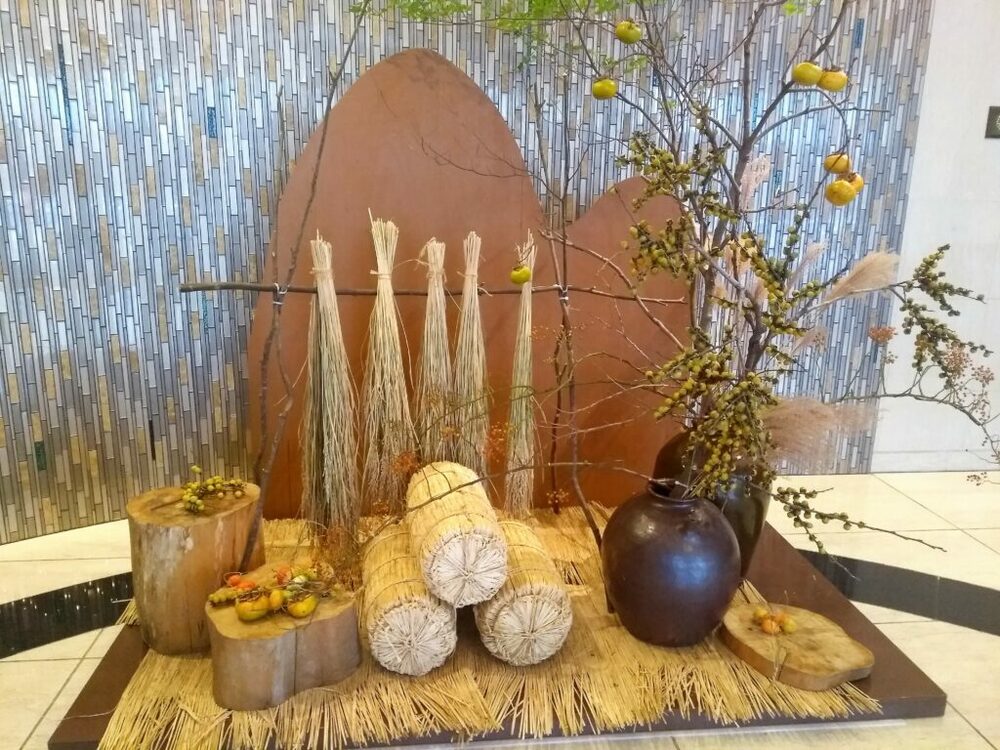
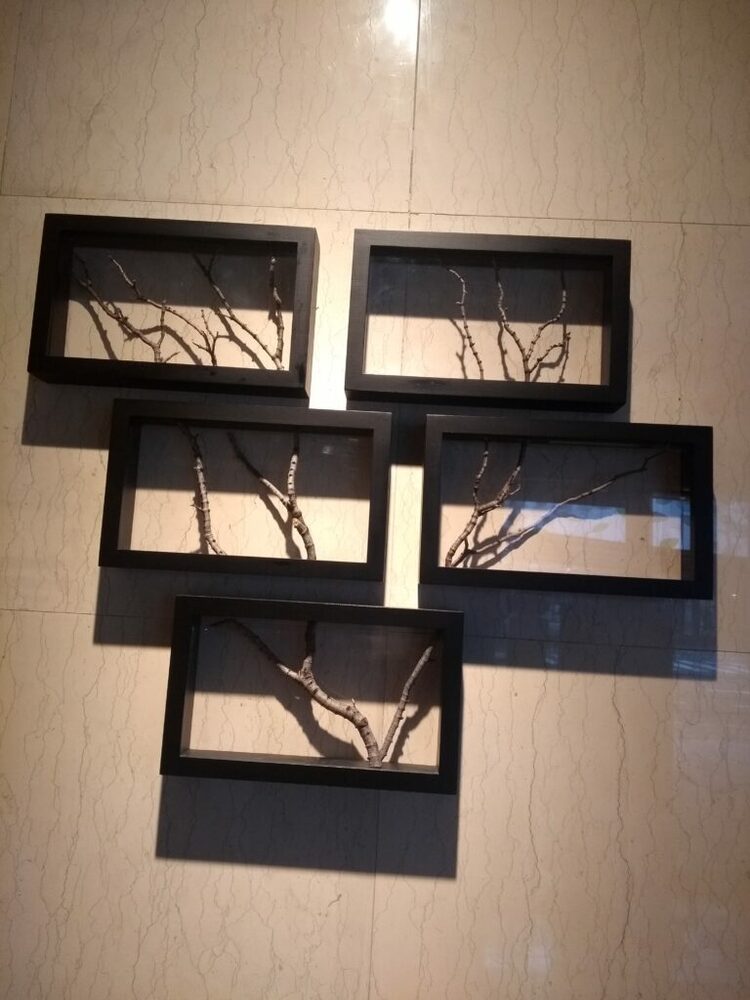
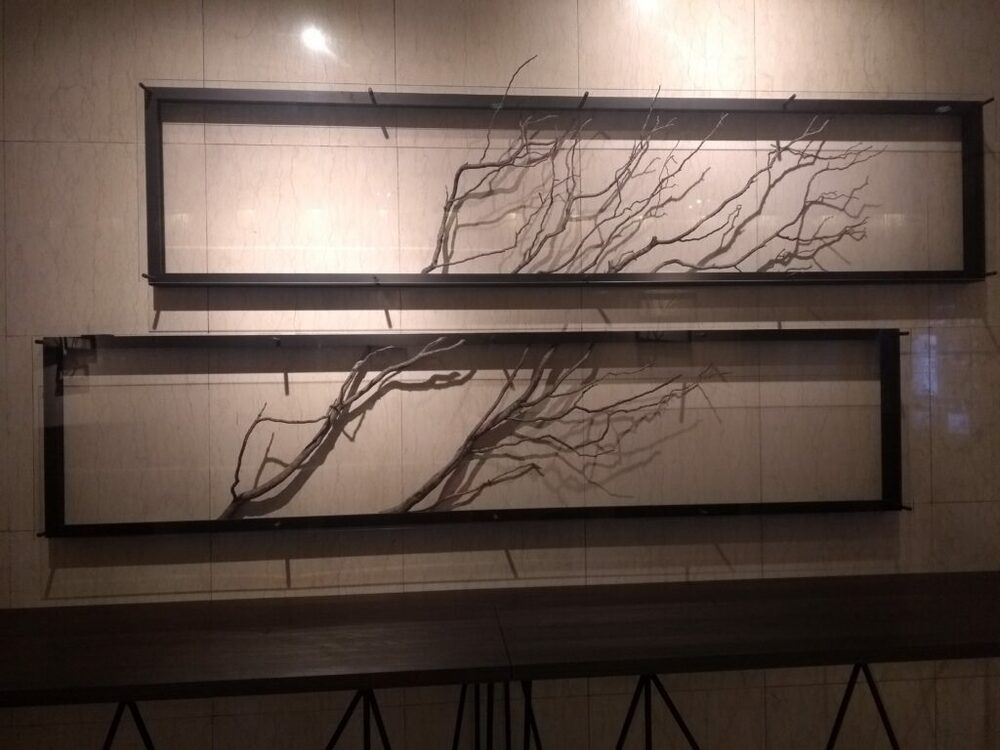
A hotel in Tokyo used dry twigs and grass to create these unusual decorations!

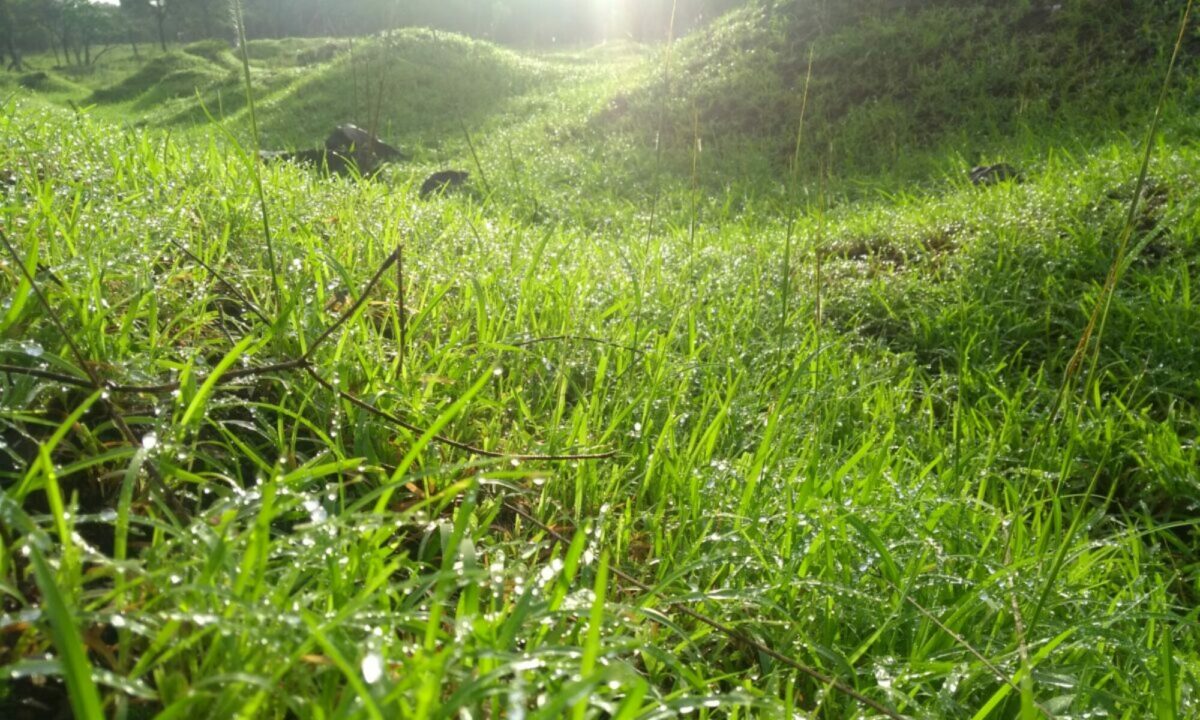
A khatta-meetha take on life around me through my presbiopic eyes!
A visit to the Acharya Jagdish Chandra Bose Botanical Garden in Kolkata was at the end of our trip to the Sunderbans. It was a botanically wondrous trip to say the least! The Garden itself is huge and home to unique trees like the famous Banyan.
Here is another tree that I met for the first and only time! A beautiful red brush like structure beckoned me from a distance and located as it was amid leaves had me immediately thinking of the Shaving Brush tree (Pseudobombax ellipticum) which does grow in Pune. However when I went closer, the tree looked different especially its leaves. It was end of January and the digitate glossy green leaves suggested a different ID.
Luckily for me, the placard saved me the trouble and I could freely admire the Pachira aquatica without any stress of identification. It belongs to the Bombacaceae family just like the Shaving Brush Tree which explained the similarity in the flowers. Also known as Malabar Chestnut tree it is an introduced species in India. I loved its flowers which are nothing like those used for table decorations or bouquets.
Have you seen this wonderful tree? When in Kolkata please do make time for the botanical garden!
I am joining Parul in her ThursdayTreeLove Blog hop. Do head over to see some wonderful trees from around the world. Better still, join in!
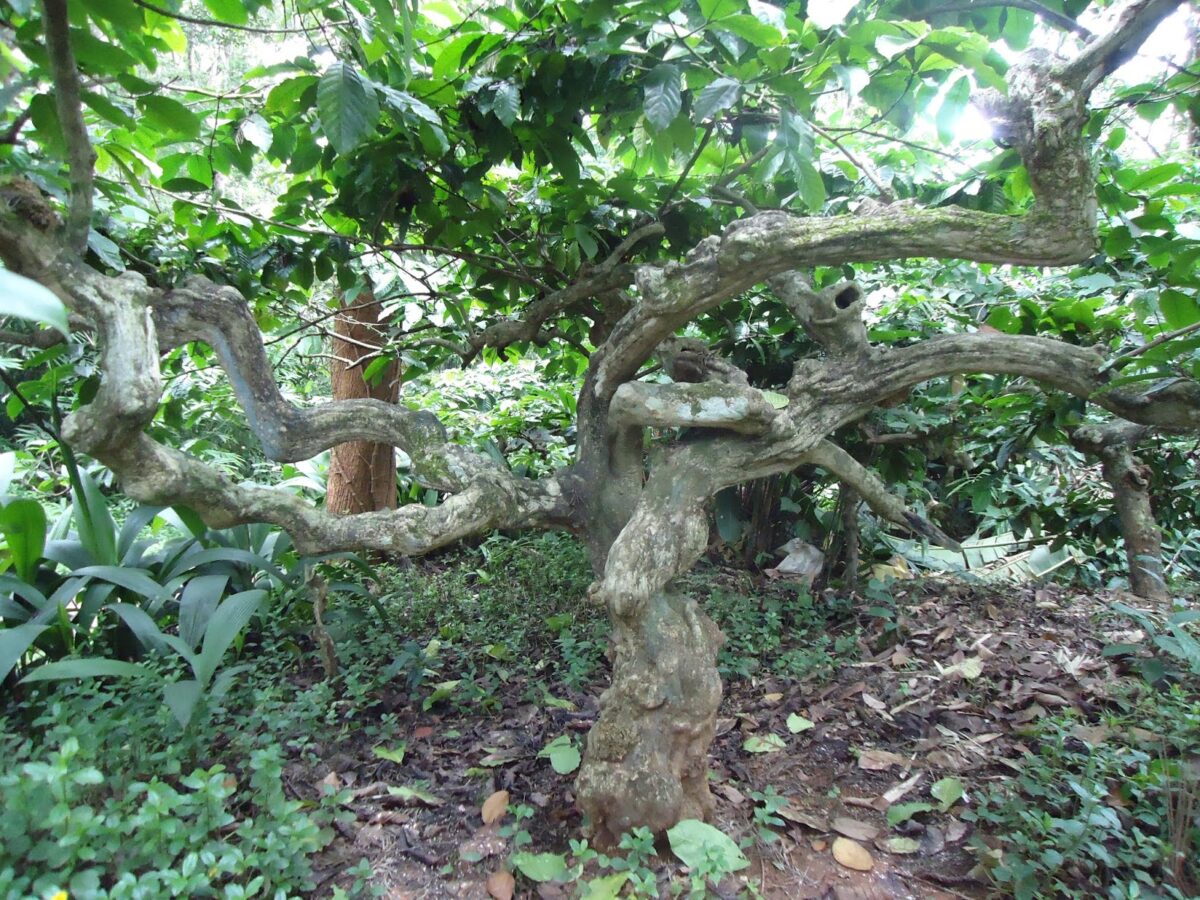

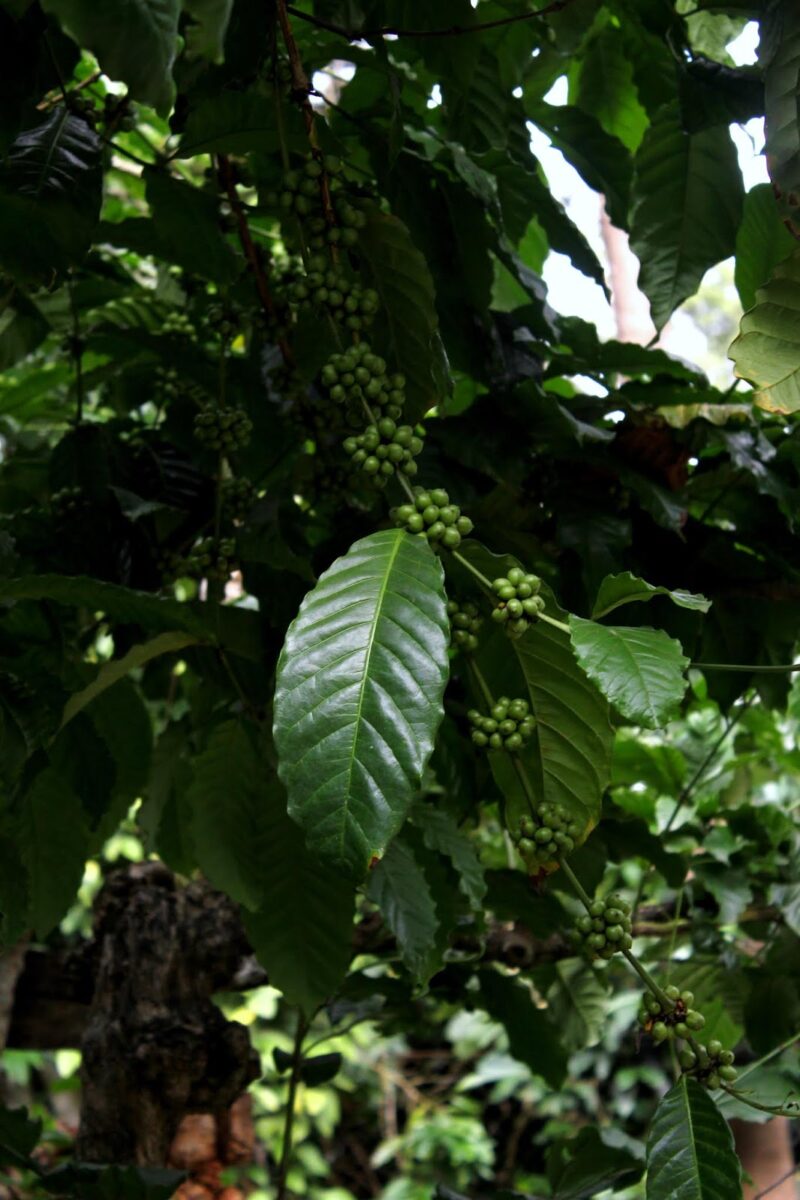  |
| Berries PC @puneribaker |
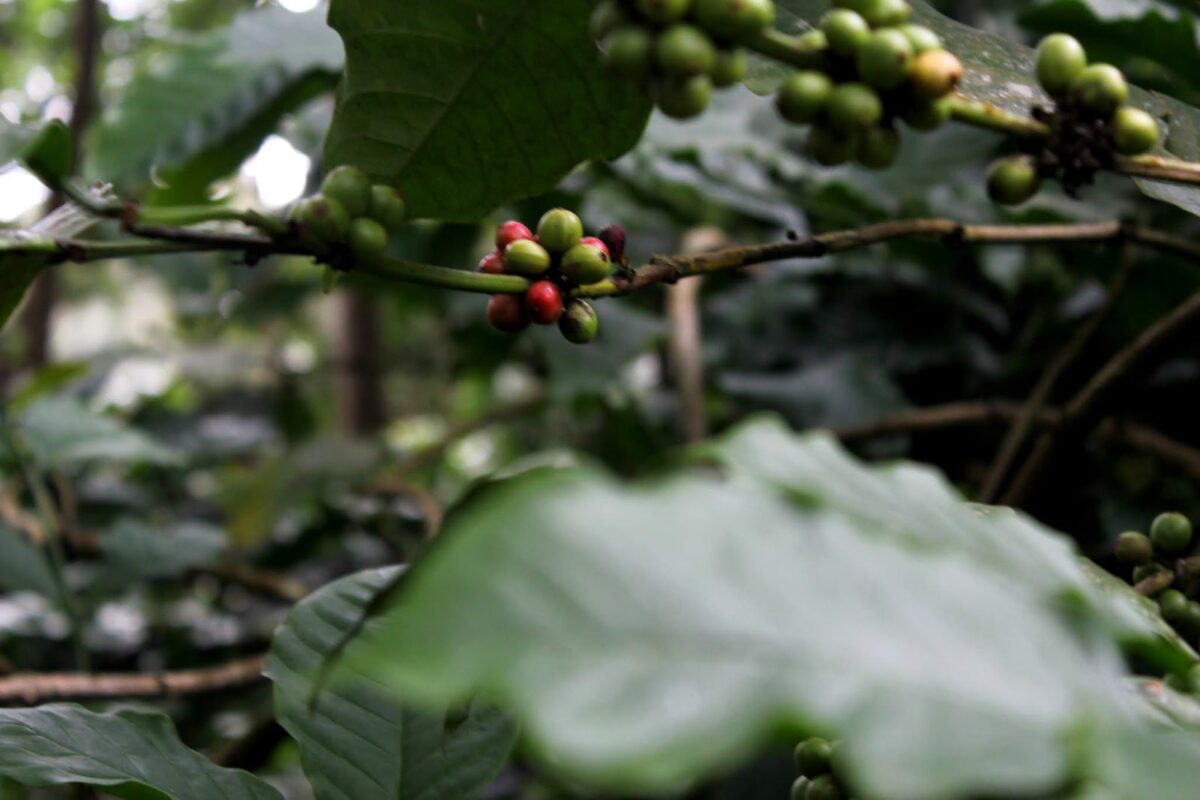  |
| Berries ripening to red PC @puneribaker |
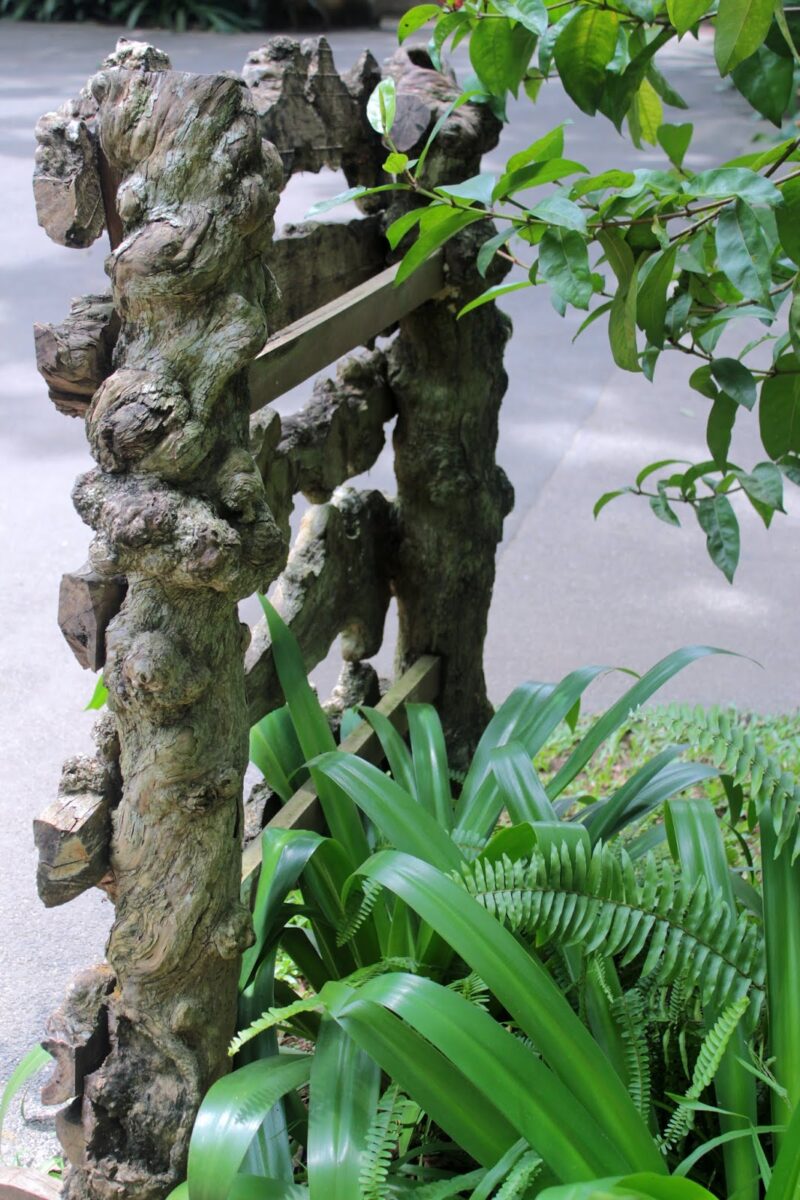  |
| The trunk is used to make lamp stands which will hold a place of pride in any drawing room. Here it has been used to make a sign post. |
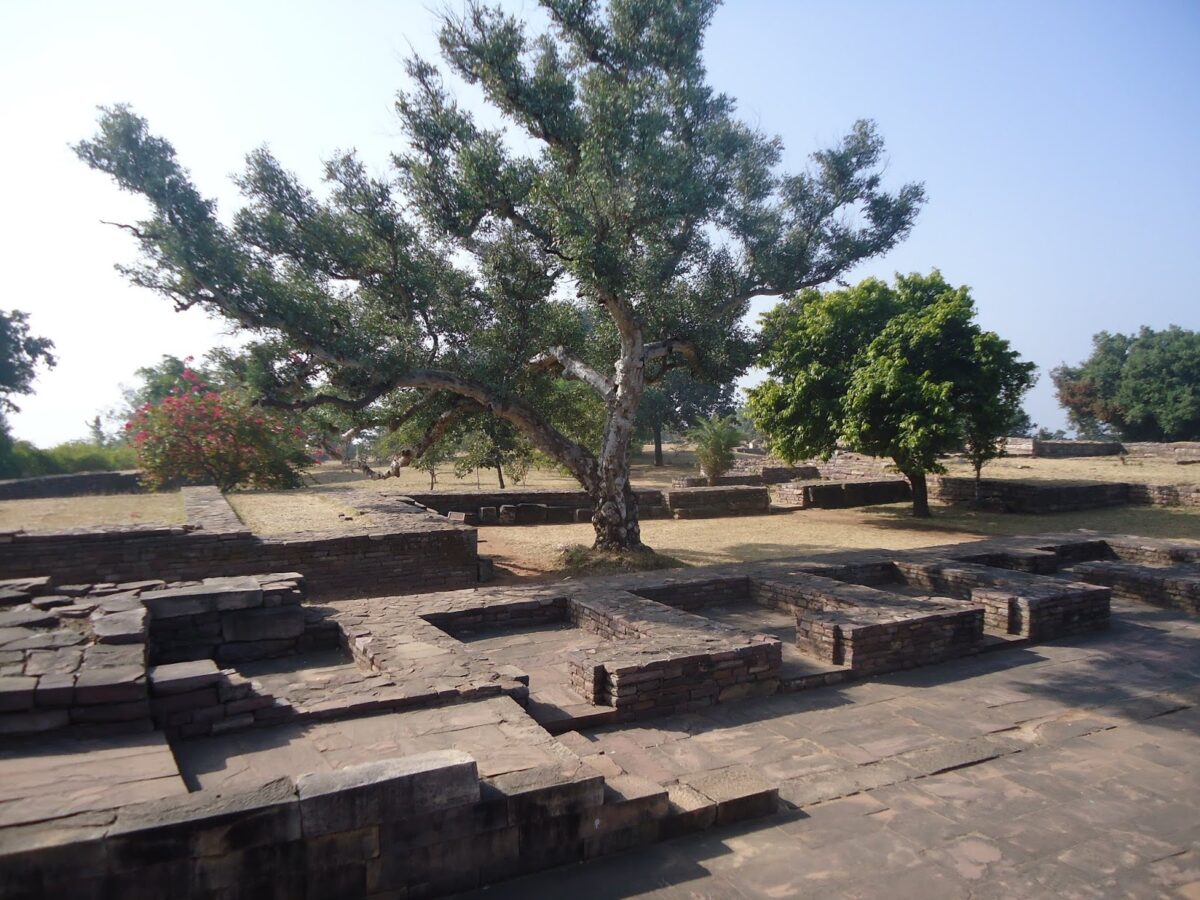

Can anyone guess where this image has been taken?
Ok, let’s not spend time on guessing games.. This gnarled tree is some species of Eucalyptus that I spotted at the Sanchi Stupa complex. It seemed really old and possibly has witnessed some the great events that occurred at this site. Or maybe it was planted later..
Heritage sites are usually home to old trees which are just as spectacular as the structures there. I have seen lovely trees at the Qutub Minar and at Hampi as well.
Have you noticed the trees when you visit a heritage or archaeological site?
If they could only tell us their version of the events they must have witnessed!!
I am joining Parul in her ThursdayTreeLove blog hop. Do head over to see some fantastic images from around the world. Better still, join in!
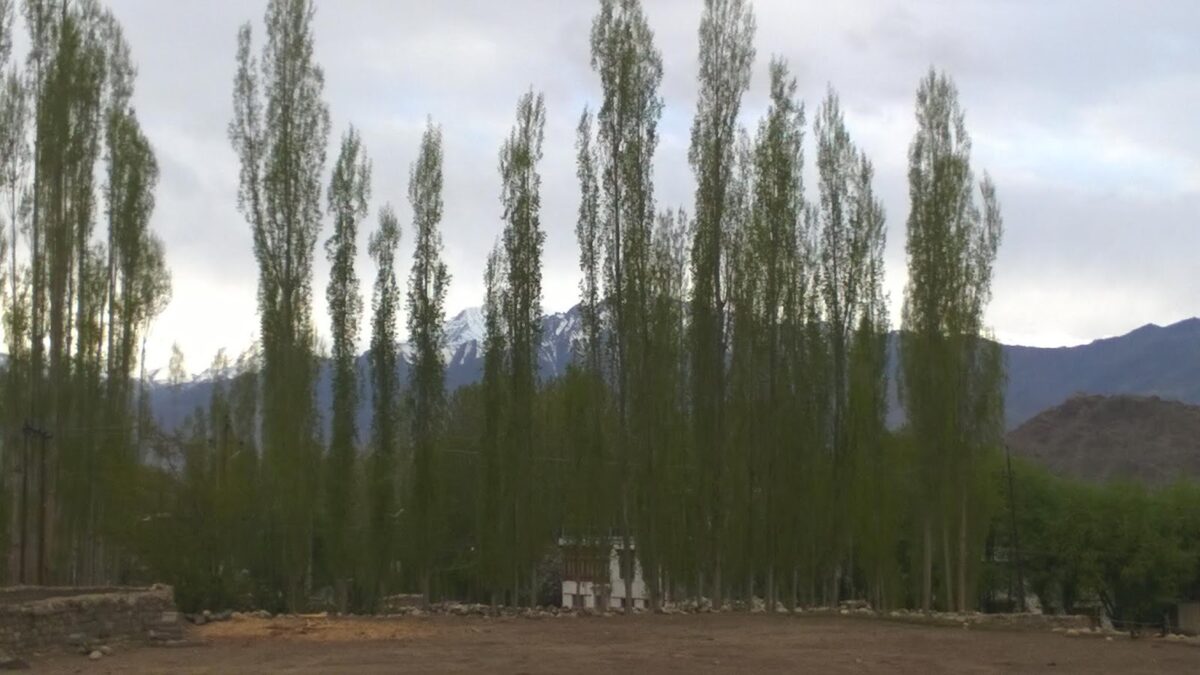

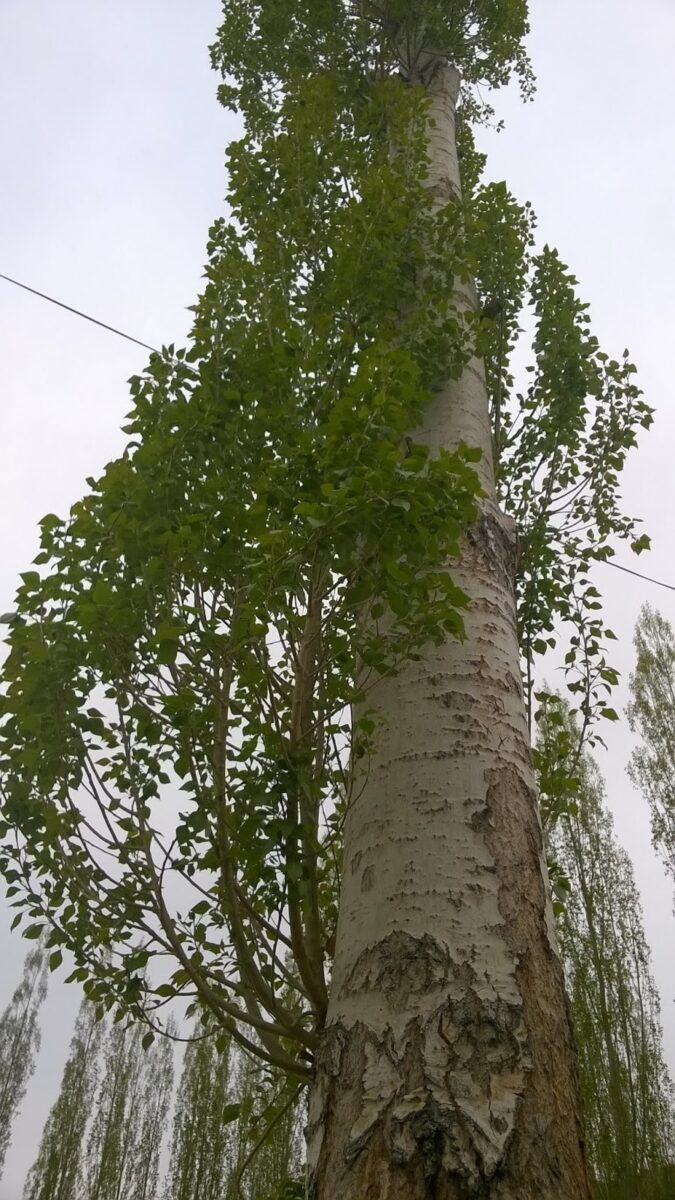  |
| Straight trunk bole |
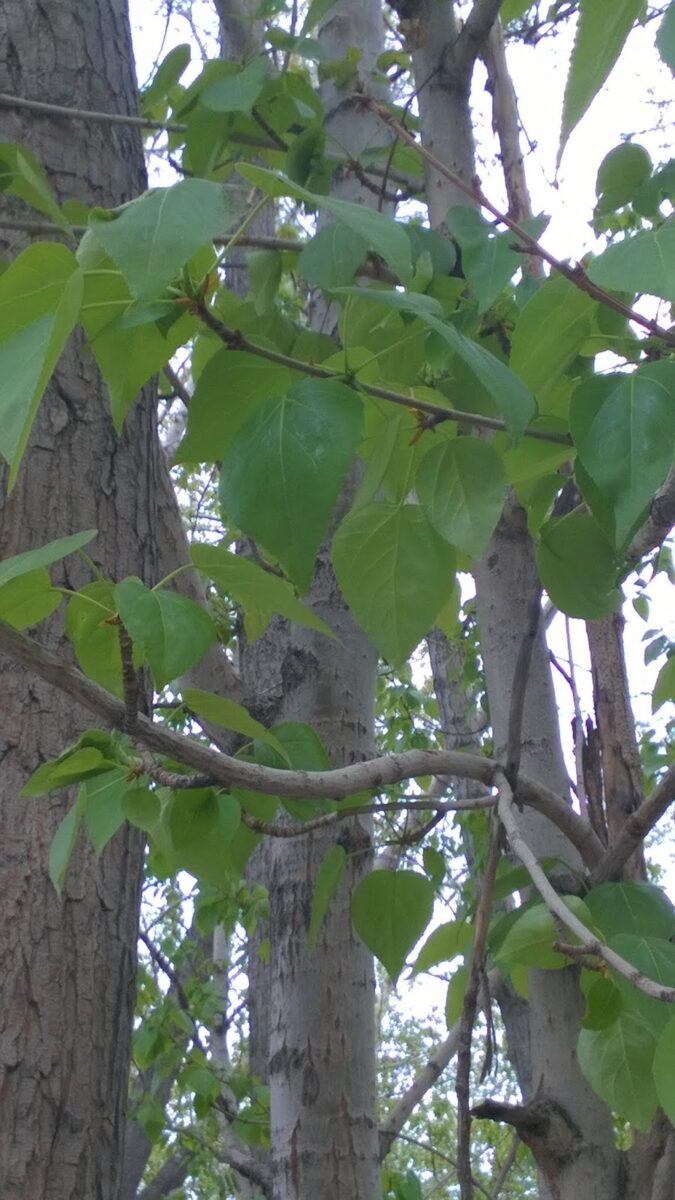  |
| Leaves |
Have you visited Leh? Did you notice these towering Poplars? Here is a list of some landmark trees of Leh.
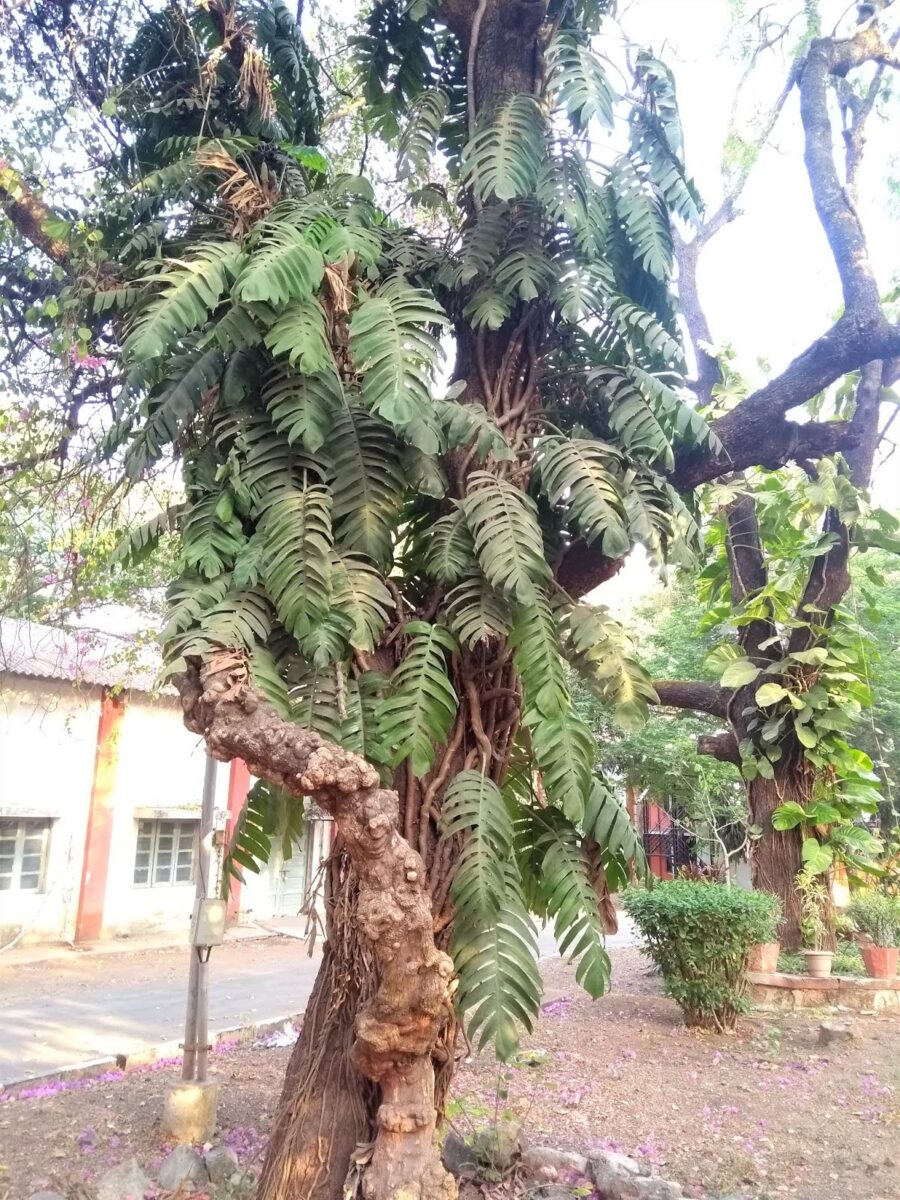

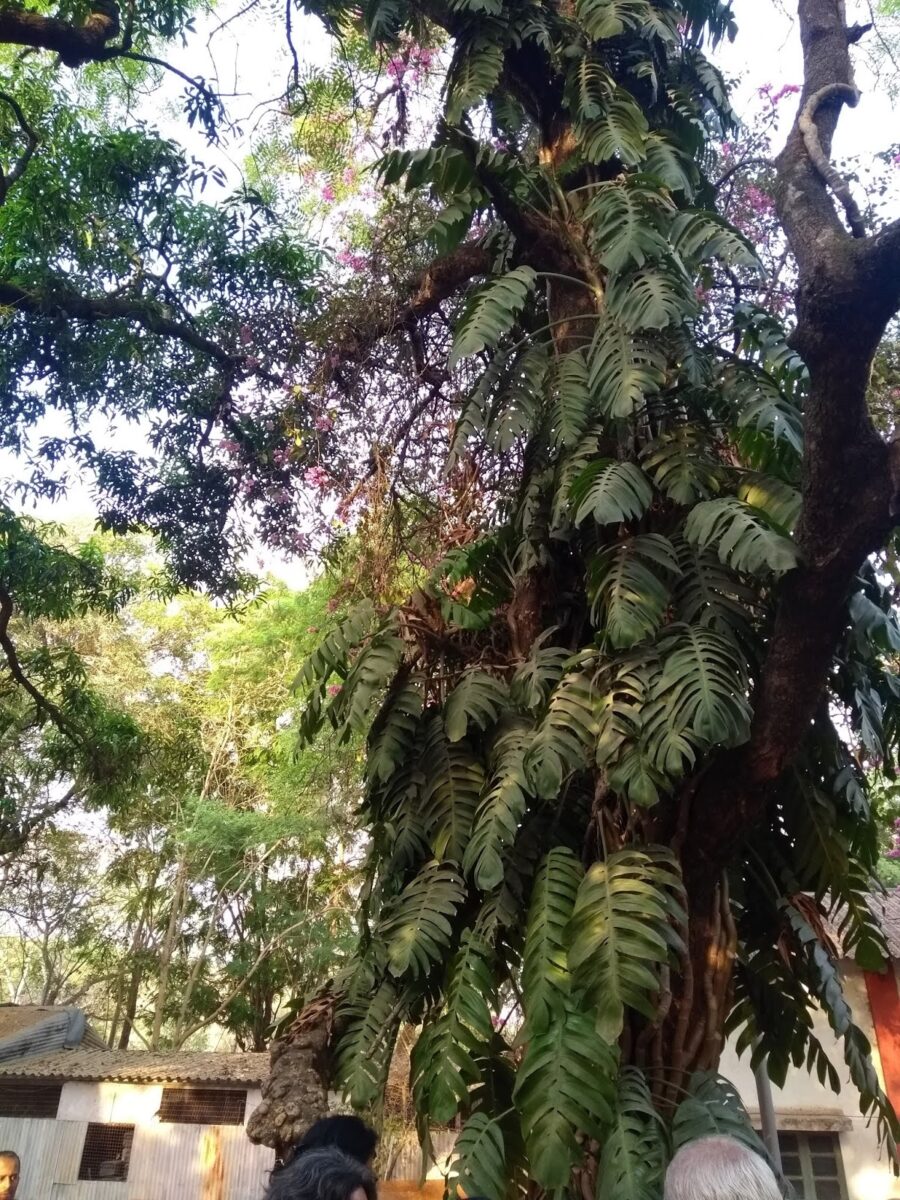

What clues do you look for to identify a plant? Have you experience the tremendous satisfaction and joy of identifying a tree/herb/shrub?
I am joining Parul in her ThursdayTreeLove blog hop. Do head over to see some fantastic trees from around the world. Better still, join in!


Magnolias belong to the Magnolia genus of the Magnoliaceae family. There are some interesting things to read about the Magnolia genus and I wont like to take up your time here.. Do head over to this Wikipedia page for more.
Either way, this sighting was a temporary satisfaction of a long time wish to see this beautiful tree. I hope I get another opportunity for a closer view of this White Beauty …
I am joining Parul in her ThursdayTreeLove bloghop. Do head over to see some glorious trees from around the world. Better still, join in!
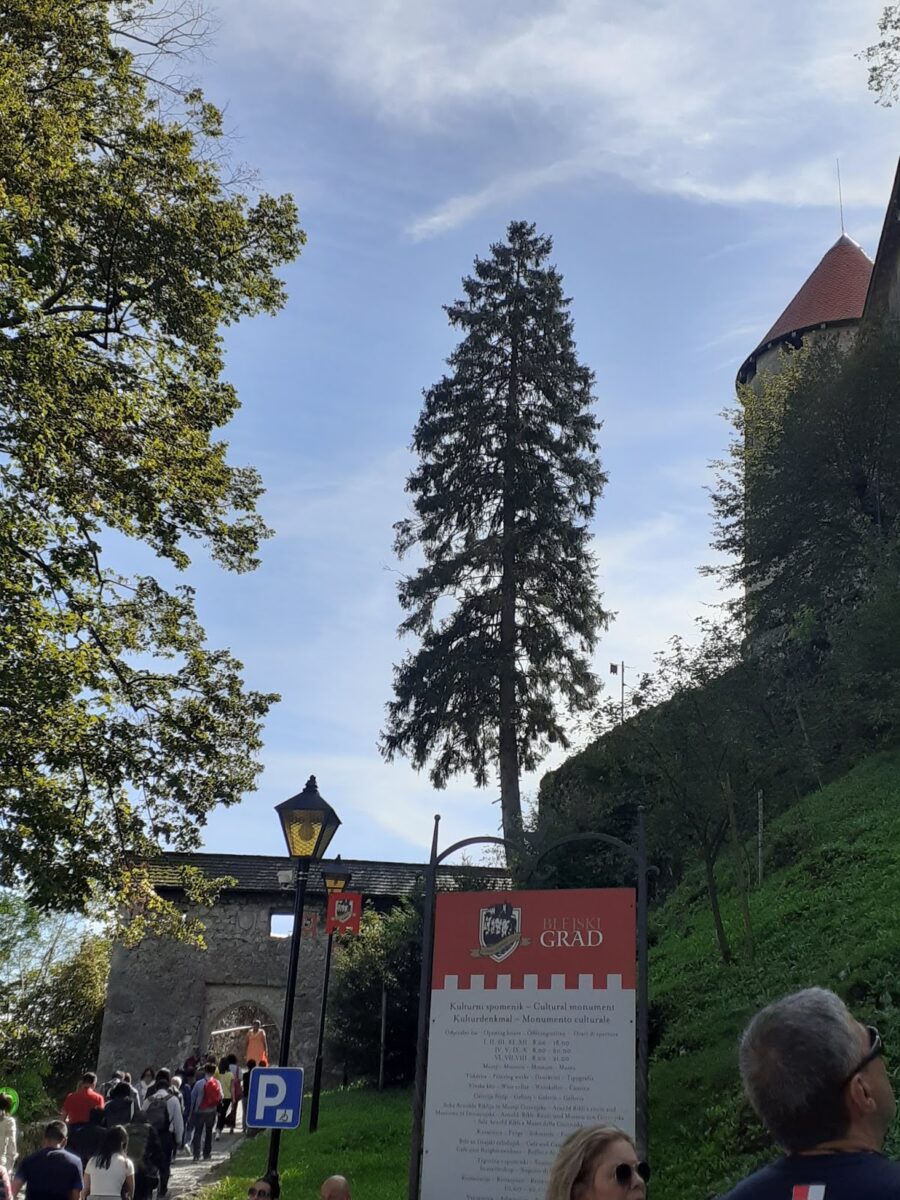  |
| First sight of the Larch |
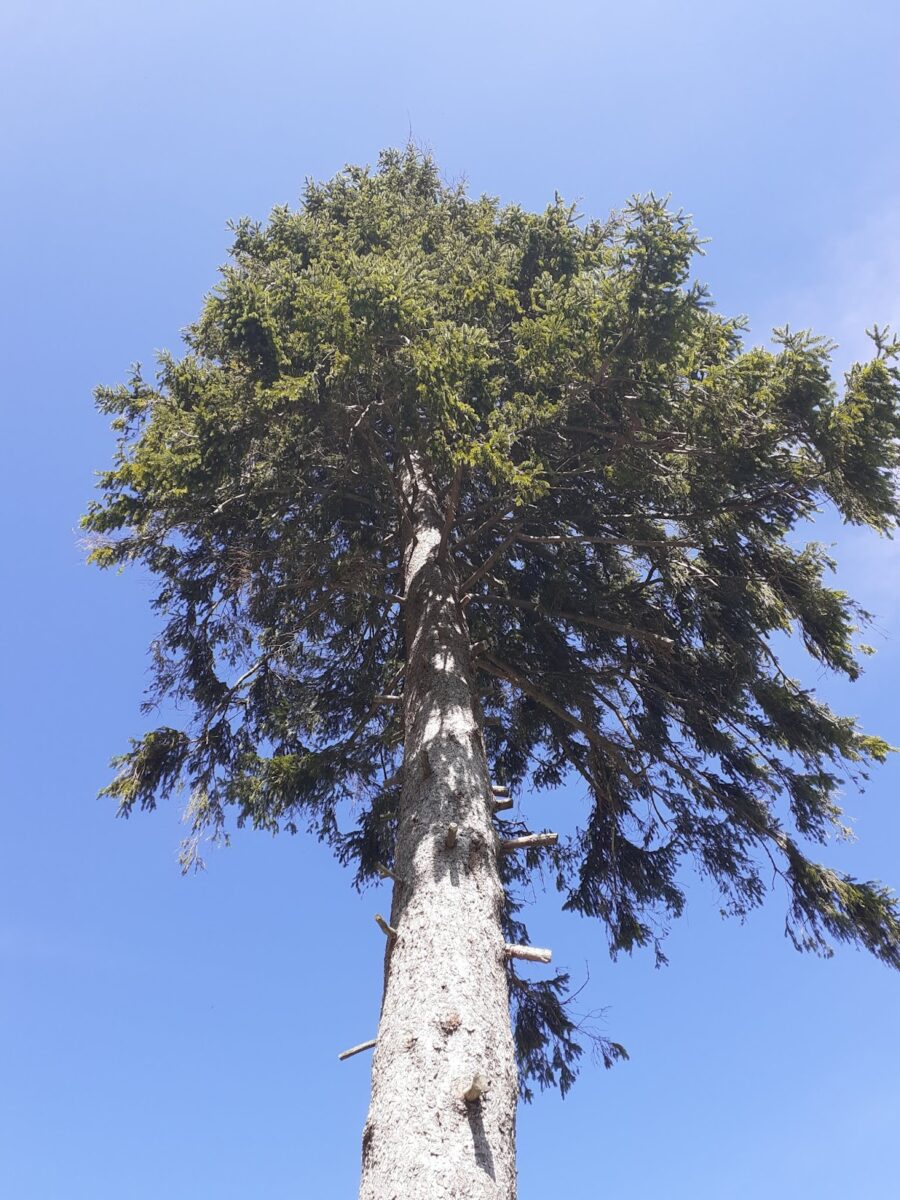  |
| This image taken from a higher spot but the tree still towered over me
Larch belongs to the Larix genus of the Pinanceae family. Despite being a conifer, it is deciduous and the needles turn a glorious golden in autumn and can be seen from a distance. I noticed they have pendulous branches.
This image is of a Larch from another place at the end of winter hence branching is visible.
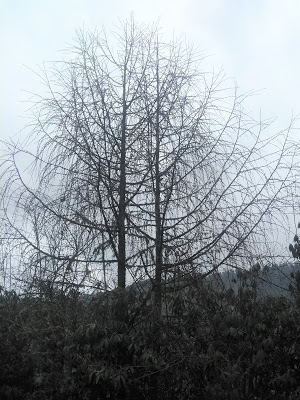 
I must mention here that, at Bled, for the first time in my travels, I met a guide who knew about Trees, their botanical names, habitats etc. She was happy to share info about ‘her’ trees and even helped id some images from my cell phone. At one point, our walk threatened to become a tree walk and I stopped before my co-travellers protested!
I am joining Parul in her ThursdayTreeLove blog hop. Do head over to see some wonderful trees from around the world. Better still, join in!
|


In the book The Wisdom of Trees, I came across these words attributed to John Stewart Collis ” Truly trees are beings. We feel that to be so. Hence their silence, their indifference to us is almost exasperating.”
Sitting near this wonderful Willow, I felt so peaceful and calm yet I am not sure the tree even felt my presence or even cared!
Either way, being near it gave me immeasurable joy!
Have you felt this way?
I am joining Parul in her ThursdayTreeLove blog hop. Head over to see some amazing trees from around the world. Better still, join in!
P.S. Willows belong to the Salix genus of the Salicaceae family. They grow in moist soils and are dioecious (meaning male and female flowers are borne on separate plants). The drooping branches make them amazingly graceful! While willows are rare in Pune, I saw plenty of them in Bhutan, and Central and eastern Europe. This lovely tree was growing in the garden of our hotel in Warsaw.
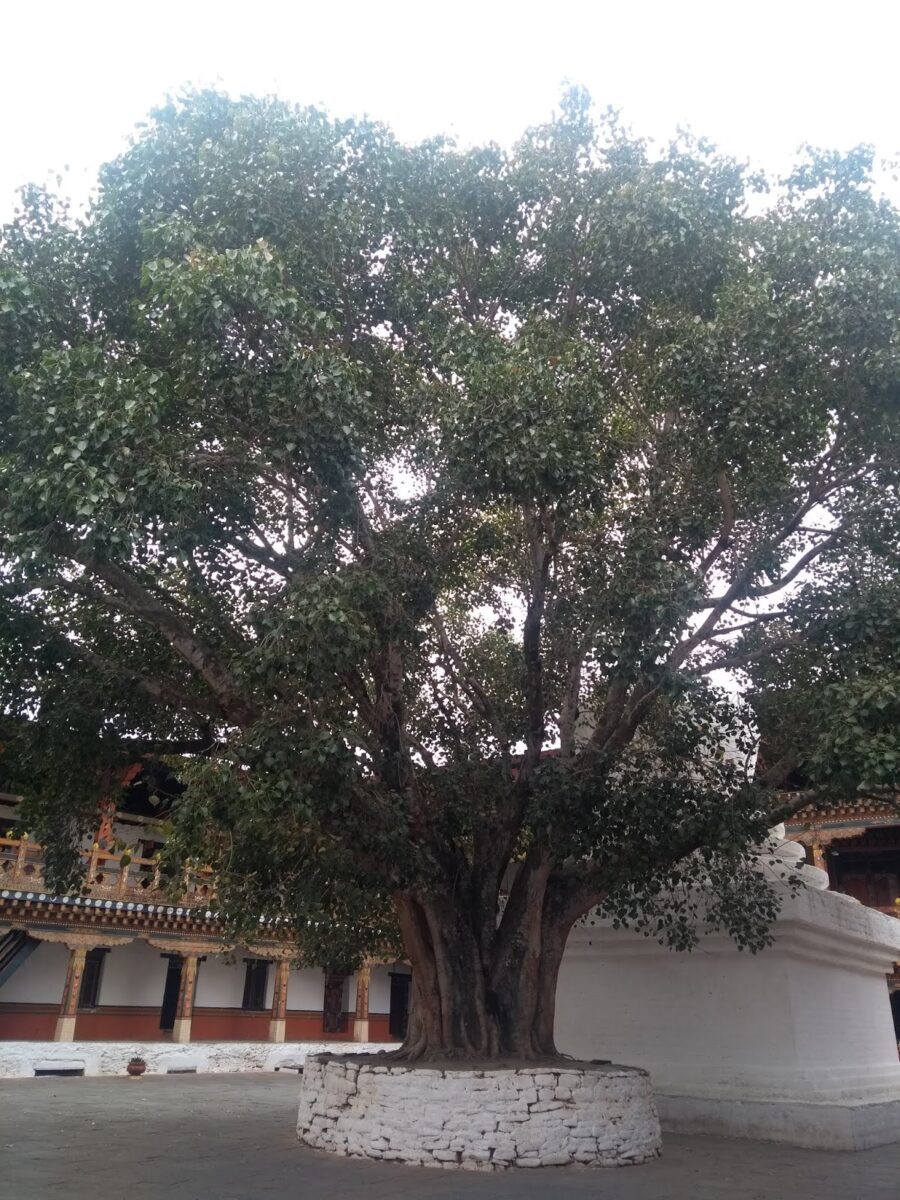

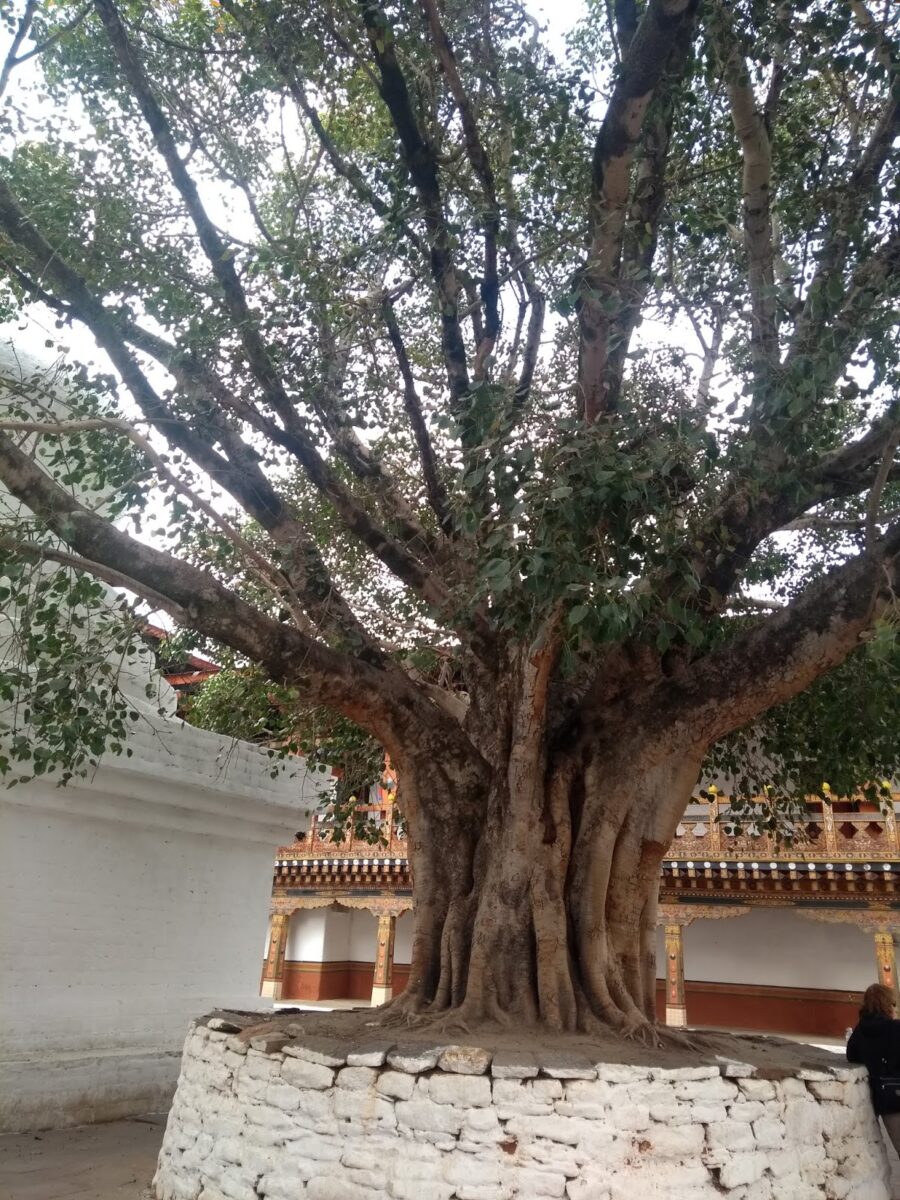

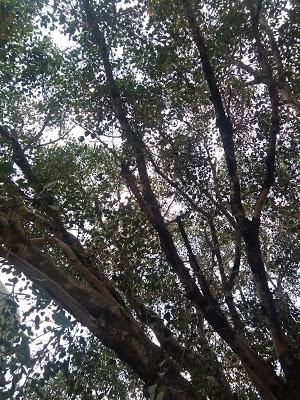

Here is a small video of the tree that captures the wind talking to the leaves!
I am joining Parul in her ThursdayTreeLove Bloghop. Do head over to see some wonderful trees from around the world. Better still, join in!